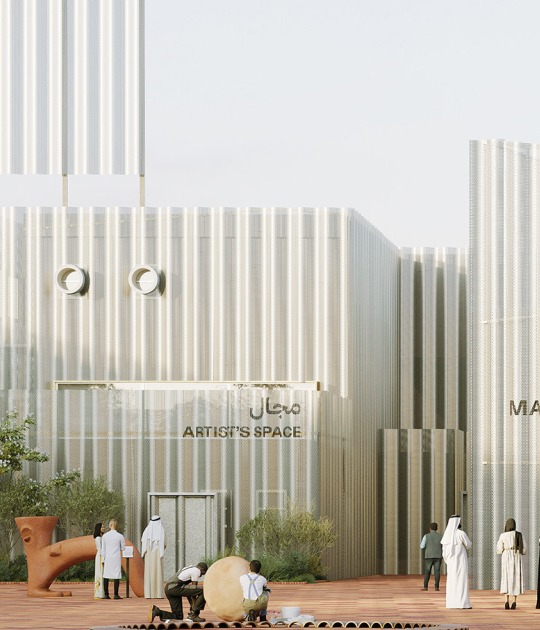At the same time, we intend to renew Parliament. The Danish Parliament is the democratic bastion of Denmark. Through this project, we aim to show the uniqueness of Danish democracy, making it open and accessible to all, but still efficient, safe and secure, and invite us all to go deeper inside its buildings, to the heart of parliamentary work, creating a democracy. meeting place for everyone.”
Inspired by the ancient Nordic parliament known as “Tingsted”, which was a highly defined open-air space for debate, where stones and wood demarcated its borders and provided a physical framework to remember the value of democratic government. The new visitor entrance is designed as a circular, open entrance, a meeting place with stairs in an amphitheatre for meetings and located within the Parliament Courtyard.

Display. The new Danish Parliament by Cobe, Arcgency and Drachmann
From the new entrance, visitors are invited into a generous and bright underground space structured with arches, enhancing the already present use of arches within the Parliament complex while visually and physically linking the complex of buildings over time and inside the complex. The large, flexible space includes a security zone, a connecting circulation lobby and an open visitor area centred on an exhibition on democracy and the Danish constitution.
The courtyard is the scene of daily life in Parliament: demonstrations, public speeches, media interviews and much more. The new amphitheatre stairs are a place to gather and observe the dynamic daily life of the square, meet before or after a visit, and be a natural meeting point for a group introduction to the Danish Parliament. At the foot of the stairs is 'The People's Tree', an imposing solitary tree that symbolizes the roots of democracy. Unifying, level-free paving within the Parliament Courtyard of existing and reused granite slabs provides flexibility and universal accessibility to the Parliament complex.
The adjacent buildings of the National Archives will be transformed into a multifunctional facility and will house a restaurant open to all users, including visitors to Parliament, exhibition spaces and modern meeting rooms and workplaces for parliamentary committees, many with access to the public.






























